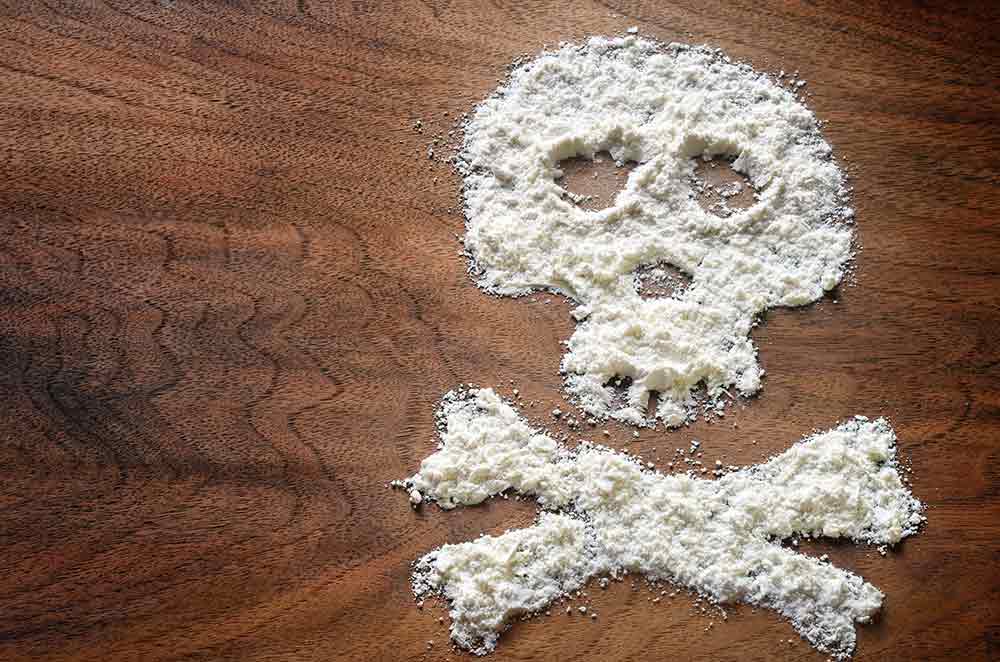Read the latest and greatest from our team
of incredible specialists.

Beach House Recovery Center » Blog » What Is a Speedball? Cocaine & Heroin’s Deadly Combination
“Speedballing” refers to the process of mixing and imbibing both a stimulant (“upper”) and a depressant (“downer”). Examples of a speedball include Xanax and crystal meth or alcohol and cocaine. The most commonly known and frequently abused combination, however, is the injection of cocaine and heroin. This kind of speedball has gained notoriety from the deaths of celebrities such as artist Basquiat, comedian Chris Farley and actor River Phoenix. Speedballing is an unpredictable gamble on the body and the mind. The up-and-down, rollercoaster effect caused by the ingestion of a stimulant and depressant attracts users chasing the perfect high — but can also be a deadly combination leading to life-threatening, even fatal consequences.

Stimulants such as cocaine work hard on the sympathetic nervous system, which regulates a person’s fight or flight response. Depressants such as heroin affect the parasympathetic system that is in charge of the body’s rest and digestive responses. The combination of the two is an attack on both systems by which the body gets mixed messages about what to do with itself. As a result, important organs controlling simple, vital and involuntary acts of the body, such as breathing, cannot do their job. In essence, when a person is speedballing, their body, mind and system are hacked in pursuit of an illusory “balanced” high. The negative effects are in fact disequilibrium, drug dependence, and, in some cases, death.
The body’s “fight or flight” response is an important evolutionary tool for alerting the mind to real danger. Cocaine use interferes with this process. The result is undue stress on the body. As cocaine elevates the stress hormones in the body, it also elevates drug cravings and drug-seeking behavior, making a person under the influence of cocaine that much more sensitive to cocaine’s effects. Similarly, the recovering person trying to stay off of cocaine is more likely to relapse, because prolonged cocaine use lessens a person’s ability to adapt to stressful situations and have the self-awareness needed to choose an alternative method of relief. The following is a list of the most common side effects of cocaine:
Heroin can be devastating to both body and mind. As a result of heroin’s targeted effects on dopamine levels, users experience an especially addictive and euphoric sensation — which many heroin users end up chasing through death’s door. As documented by the National Institute on Drug Abuse (NIDA), heroin overdoses have risen at a rate of four times the amount from 2001 to 2013, and continues to grow steadily. Below are some heroin-related effects and complications:
Intoxication and addiction to cocaine and heroin, especially when injected, compromises judgment and decision-making, and leads to risky behavior such as needle sharing and the exchange of sex for drugs, according to NIDA. Consequently, there is also a higher probability of contracting infectious diseases such as HIV and Hepatitis C. The effects of mixing cocaine and heroin, speedballing, range from pleasurable sensations to short and long-term, negative consequences that can culminate in death. The following is a summary of these consequences:
The urge to return to the intense euphoria and illusion of the perfect balance creates a greater incidence of relapse in speedball users than in other addicts. In fact, the rate of relapse is seventy-five percent in the first year alone, due to cravings and impaired stress coping mechanisms. The acquisition of stress management tools and peer support and other recovery resources is thus vital to recovery. The following is a list of resources and proven relapse prevention methods that correlate with better success rates for recovery from speedball abuse:
Whether you’re researching for yourself or a loved one, Beach House can help. We understand that this is a serious time in your life and that the treatment center you choose matters. We want you to feel comfortable and empowered to make the right decision for yourself, a friend, or a family member. This is why a counselor is waiting and available to answer your questions and help put your mind at ease regarding the next steps. Many of the staff at Beach House have walked in your shoes. If you feel you’re ready or want more information about how to help a loved one, we can help today. You can also learn why we are voted the #1 rehab for addiction treatment in Florida.





"*" indicates required fields